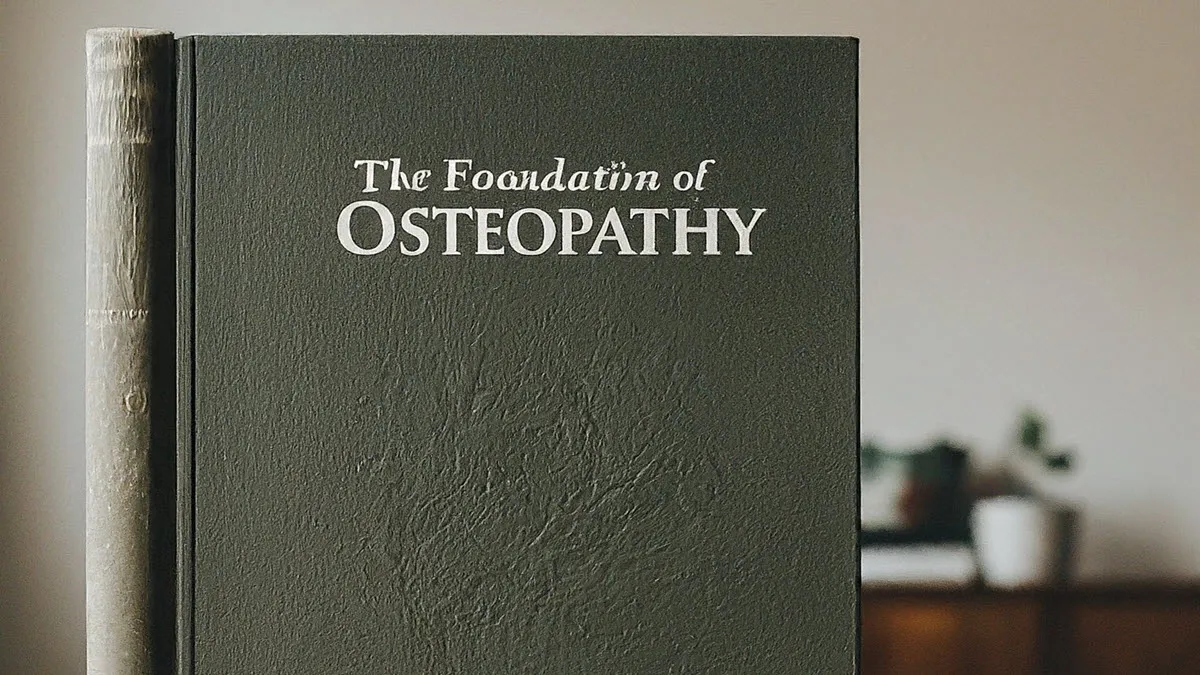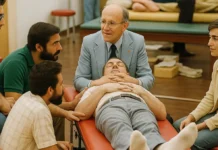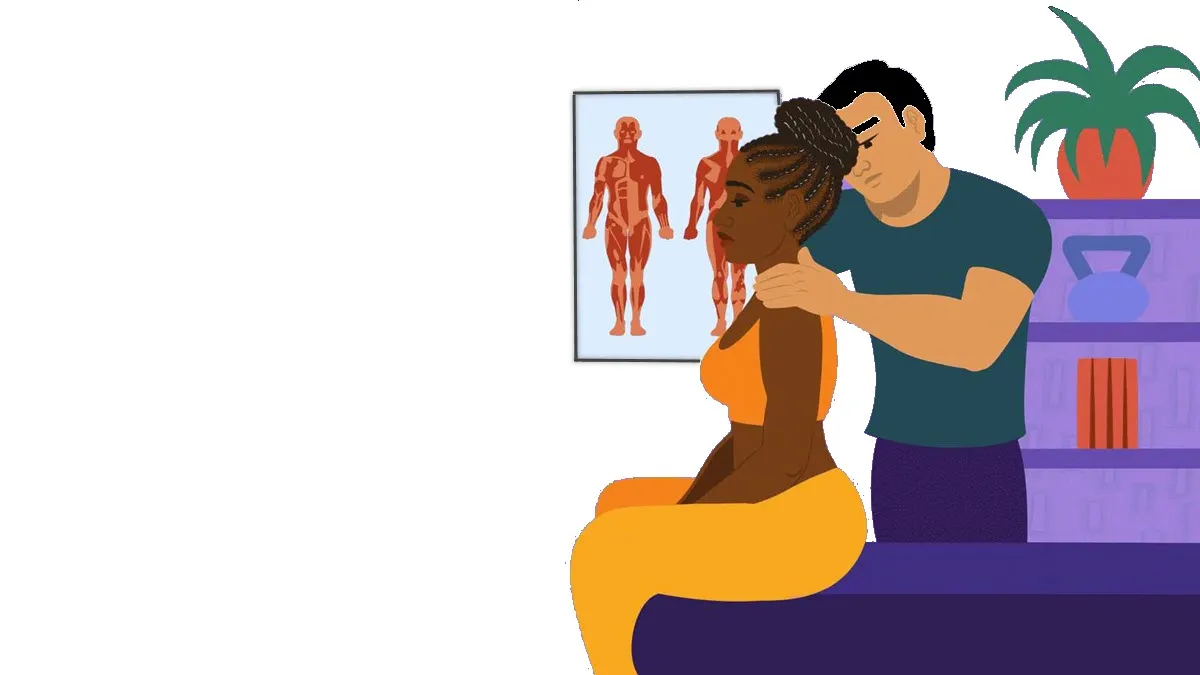Introduction
Osteopathy, an alternative medical discipline, is based on holistic principles that aim to treat musculoskeletal disorders by considering the body as a whole. Its origin dates back to the 19th century, thanks to Dr. Andrew Taylor Still, a pioneer of this innovative approach. Since then, osteopathy has gained worldwide recognition, attracting growing interest among healthcare professionals and patients.
The foundations of osteopathy are based on the belief that the body has an intrinsic capacity to heal itself. By treating not only specific symptoms, but also considering the structural and functional aspects of the body, osteopaths seek to restore natural balance. This holistic approach takes into account the interconnection between the body’s different systems, emphasizing the need for smooth flow of energy and bodily fluids.
Osteopathic techniques vary, but often include gentle manipulation of tissues, joints, and muscles to reduce movement restrictions and promote healing. Osteopathy has been shown to be effective in many cases, including treating conditions such as back pain, migraines and orthopedic disorders.
The effectiveness of osteopathy has been studied through the scientific literature, where research has been carried out to evaluate its benefits. Although some studies have shown positive results, there are also debates about the methodology and scope of this research. However, many health professionals recognize osteopathy as a valuable complement to conventional medical approaches.
The Fundamental Principles of Osteopathy
Structure Governs Function
The founding principle of osteopathy, coined by Dr. Andrew Taylor Still, revolves around the profound interplay between the structure and function of the human body. Central to this concept is the understanding that any deviation from optimal structural alignment can have profound repercussions on bodily functions. Dr. Still’s insights into this intricate relationship laid the groundwork for osteopathic philosophy and practice, emphasizing the pivotal role of structural integrity in maintaining overall health and well-being.
Dr. Still hypothesized that structural imbalances within the body could disrupt essential physiological processes, including blood circulation and nervous system function. According to his teachings, these disruptions serve as precursors to a wide array of health issues, ranging from musculoskeletal pain to systemic dysfunction. By addressing these structural irregularities, osteopaths aim to restore harmony and equilibrium to the body, thereby promoting optimal function and facilitating the innate capacity for self-healing.
At the core of osteopathic treatment modalities lies the principle of manual therapy, wherein practitioners utilize their hands to manipulate the body’s tissues and joints. Through precise and targeted techniques, osteopaths seek to realign the musculoskeletal system, alleviate tension, and improve mobility. By restoring proper alignment and function to the body’s structures, osteopathic manipulation aims to address the root cause of dysfunction, rather than merely alleviating symptoms.
Moreover, osteopathic philosophy emphasizes the interconnectedness of the body’s various systems, recognizing that structural integrity extends beyond the musculoskeletal system to encompass vital functions such as circulation, respiration, and digestion. Structural imbalances can impede these physiological processes, creating a cascade of dysfunction throughout the body. Osteopathic interventions, therefore, aim to optimize structural alignment to enhance overall health and vitality.
Furthermore, the holistic nature of osteopathy extends beyond the physical realm to encompass the interconnectedness of body, mind, and spirit. Osteopaths recognize the profound impact of psychological and emotional factors on physical health, acknowledging the importance of addressing the whole person in the healing process. By fostering a therapeutic partnership between practitioner and patient, osteopathy seeks to empower individuals to take an active role in their own well-being.
Unity of the Body
At the heart of osteopathic philosophy lies a profound recognition of the body’s innate unity—a complex interplay of interconnected systems working in harmony to sustain life. Osteopathy views the body not as a collection of disparate parts but as a dynamic and integrated whole, where every structure and function is intricately interconnected and interdependent. This holistic perspective forms the foundation of osteopathic practice, guiding practitioners to understand and respect the profound unity that defines human physiology.
Central to osteopathic philosophy is the principle that the body functions as a unified entity, wherein each component plays a vital role in maintaining overall health and well-being. Osteopathic practitioners delve deep into the intricate relationships between different parts of the body, recognizing that dysfunction in one area can have far-reaching effects throughout the entire system. By comprehensively assessing the body’s structural and functional integrity, osteopaths aim to identify the underlying source of health problems, rather than merely addressing isolated symptoms.
This holistic approach to health care emphasizes the importance of treating the root cause of illness, rather than focusing solely on alleviating symptoms. Osteopathic practitioners adopt a patient-centered approach, taking into account the individual’s unique physical, emotional, and environmental factors. By understanding the interconnectedness of various bodily systems, osteopaths can develop personalized treatment plans tailored to address the underlying imbalances contributing to ill health.
Moreover, osteopathy recognizes the intrinsic connection between the physical body and the mind, acknowledging the profound impact of psychological and emotional factors on overall well-being. Practitioners strive to create a therapeutic environment that fosters trust, empathy, and open communication, empowering patients to actively participate in their healing journey. By addressing the holistic needs of the individual—body, mind, and spirit—osteopathy seeks to promote not only physical health but also emotional resilience and spiritual vitality.
Self-healing of the Body
At the core of osteopathic philosophy lies a profound belief in the body’s remarkable capacity for self-regeneration and healing. Osteopaths embrace the innate wisdom of the body, recognizing its inherent ability to restore balance and vitality when given the proper support and conditions. This principle of self-healing serves as a guiding light in osteopathic practice, shaping therapeutic interventions aimed at removing obstacles and facilitating the body’s natural healing processes.
Osteopathy posits that the body possesses an inherent intelligence—a dynamic interplay of physiological mechanisms designed to maintain equilibrium and promote health. Central to this perspective is the understanding that structural imbalances and dysfunctions can impede the body’s self-regulatory mechanisms, leading to a cascade of health problems. By addressing these structural obstacles and restoring balance to the body, osteopaths create an environment conducive to self-healing, allowing the innate healing capacity of the body to flourish.
Osteopathic treatment modalities, such as manual therapy and manipulation, are designed to realign the body’s structures, alleviate tension, and improve circulation. By removing physical impediments and optimizing biomechanical function, osteopaths aim to enhance the body’s ability to self-regulate and heal. Moreover, osteopathic interventions take into account the interconnectedness of body systems, recognizing that structural integrity plays a vital role in supporting overall health and well-being.
Furthermore, osteopathy encourages a holistic approach to health care that addresses not only physical symptoms but also the underlying causes of illness. Osteopathic practitioners collaborate with patients to develop personalized treatment plans that encompass lifestyle modifications, nutritional support, and stress management techniques. By empowering individuals to take an active role in their healing journey, osteopathy fosters a sense of agency and self-empowerment, aligning with the body’s innate capacity for self-healing.
Osteopathic Techniques
Unleashing Mobility and Vitality: The Role of Myofascial Release in Osteopathic Practice
Fascia, a complex network of connective tissue that envelops muscles and organs, serves as a vital framework that supports and connects various structures within the body. Osteopathic philosophy recognizes the integral role of fascia in maintaining mobility, posture, and overall function, highlighting its significance in promoting optimal health and well-being. Myofascial release techniques, employed by osteopathic practitioners, represent a cornerstone of treatment modalities aimed at addressing fascial restrictions and restoring balance to the body.
Myofascial release involves gentle, sustained pressure applied to specific areas of tension or restriction within the fascial system. Osteopaths utilize their hands to palpate and manipulate the fascia, seeking to release adhesions, alleviate tightness, and improve tissue mobility. By targeting areas of restricted fascia, myofascial release techniques aim to restore the natural glide and elasticity of the tissue, thereby promoting greater range of motion and reducing muscle pain and discomfort.
Central to myofascial release is the understanding that fascial restrictions can exert significant influence on musculoskeletal function, leading to a wide array of symptoms and dysfunctions. Tightness or adhesions within the fascial network can impede joint mobility, restrict muscle movement, and contribute to pain and discomfort. Osteopathic practitioners employ myofascial release techniques to address these restrictions, facilitating the body’s innate capacity for self-healing and promoting optimal function.
Moreover, myofascial release embodies a holistic approach to health care that considers the interconnectedness of body systems and the unique needs of the individual. Osteopaths tailor treatment plans to address not only the physical manifestations of fascial restrictions but also the underlying causes contributing to dysfunction. By fostering a therapeutic partnership with patients, osteopathic practitioners empower individuals to actively participate in their healing journey, promoting self-awareness and self-care practices that support long-term well-being.
Visceral Techniques
Within the intricate tapestry of the human body lies a network of internal organs—vital structures that play a profound role in sustaining life and promoting health. Osteopathic philosophy recognizes the intricate interplay between the body’s internal systems, acknowledging that restrictions within the organs can have far-reaching effects on overall health and well-being. Visceral techniques, a cornerstone of osteopathic practice, offer a gentle yet powerful approach to addressing restrictions within the organs, promoting mobility, vitality, and internal harmony.
Visceral techniques involve precise, targeted manipulation of internal organs to alleviate restrictions and restore optimal function. Osteopathic practitioners utilize their hands to palpate and mobilize the organs, identifying areas of tension, adhesions, or restricted mobility. By applying gentle yet deliberate pressure, osteopaths aim to release these restrictions, thereby promoting improved circulation, lymphatic drainage, and neural function within the affected organs.
Central to the philosophy of visceral techniques is the understanding that restrictions within the organs can exert profound influence on other parts of the body, contributing to a wide array of symptoms and dysfunctions. For example, restrictions within the gastrointestinal system may manifest as back pain, while tension in the diaphragm can impact respiratory function and rib mobility. Osteopathic practitioners employ visceral techniques to address these underlying imbalances, promoting greater overall health and vitality.
Moreover, visceral techniques embody a holistic approach to health care that considers the interconnectedness of body systems and the unique needs of the individual. Osteopaths work collaboratively with patients to develop personalized treatment plans that address not only the physical manifestations of organ dysfunction but also the underlying causes contributing to ill health. By fostering a therapeutic partnership grounded in empathy, trust, and mutual respect, osteopathic practitioners empower individuals to take an active role in their healing journey, promoting self-awareness and self-care practices that support long-term well-being.
Craniosacral Approaches
Craniosacral techniques focus on the rhythmic movements of the spinal fluid that surrounds the brain and spinal cord. Osteopaths use gentle manipulation of the skull and sacrum to influence this rhythm, believing that it can have beneficial effects on the nervous system and overall health.
Scientific Research on Osteopathy
Although osteopathy is widely practiced and appreciated by many patients, its effectiveness is the subject of debate in the scientific community. Some studies have suggested significant benefits for specific conditions, while others have questioned the validity of certain techniques.
A systematic review published in the Journal of the American Medical Association in 2017 examined 25 randomized clinical trials of osteopathy. The researchers concluded that osteopathy may be beneficial for some conditions, including lower back pain and headaches, but highlighted the need for more research to assess its effectiveness in other areas.
Other studies have focused on the mechanisms of action of osteopathy. Research published in “PLoS ONE” in 2015 examined the effects of spinal manipulations on brain activity. The results suggested neurological changes associated with the manipulations, but further investigation is needed to fully understand these mechanisms.
Ethical Considerations and Training of Osteopaths
As osteopathy continues to grow in popularity, ethical questions sometimes surround the profession. Some health professionals warn against scientifically unfounded practices and emphasize the importance of adequate training for osteopaths.
Osteopaths, to practice legally, must undergo rigorous training. In many countries, this involves obtaining a university degree in osteopathy. However, variations exist between countries, raising concerns about the consistency and quality of training.
Conclusion
In conclusion, osteopathy is based on fundamental principles aimed at treating the body as a whole, considering the relationship between structure and function. Osteopathic techniques, such as joint manipulation, myofascial release, and visceral approaches, are used to restore balance and promote self-healing.
Although studies have suggested benefits for certain conditions, research into the effectiveness of osteopathy remains an evolving area. Practitioners must continue to engage in rigorous research to establish the validity of their techniques. At the same time, the ethical and adequate training of osteopaths is essential to guarantee the safety and quality of the care provided.
Ultimately, osteopathy remains a fascinating discipline that evolves in response to advances in scientific research and ethical concerns. Its impact on the health and well-being of individuals continues to be explored and discussed within the medical community and beyond.

























